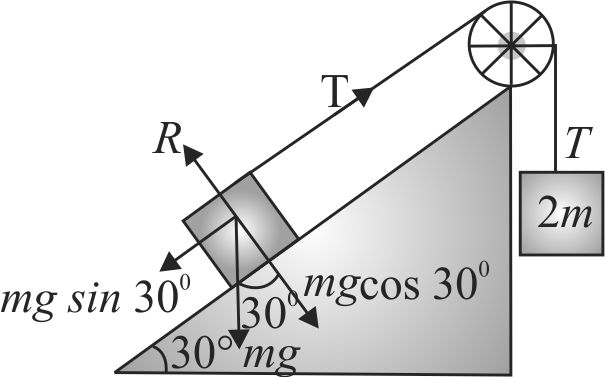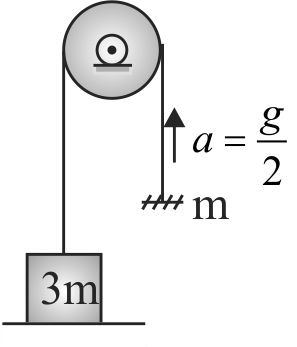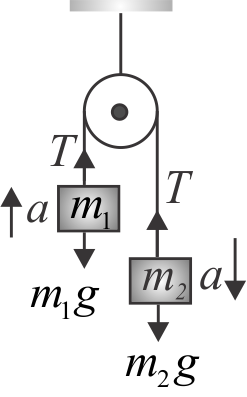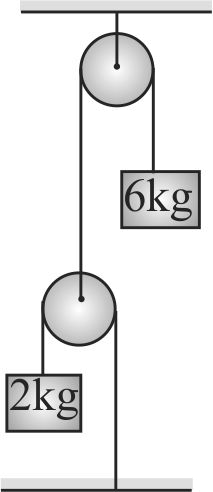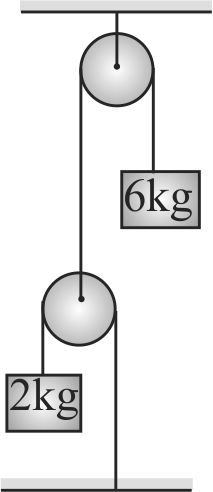363087
Two blocks of masses \(m\) and 2 \(m\) are connected by a light string passing over a frictionless pulley. As shown in the figure, the mass \(m\) is placed on a smooth inclined plane of inclination \(30^\circ \) and 2 \(m\) hangs vertically. If the system is released, the blocks move with an acceleration equal to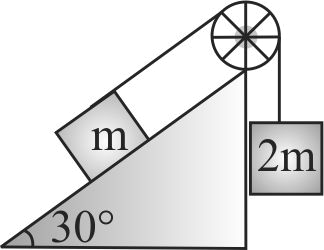
363087
Two blocks of masses \(m\) and 2 \(m\) are connected by a light string passing over a frictionless pulley. As shown in the figure, the mass \(m\) is placed on a smooth inclined plane of inclination \(30^\circ \) and 2 \(m\) hangs vertically. If the system is released, the blocks move with an acceleration equal to
363087
Two blocks of masses \(m\) and 2 \(m\) are connected by a light string passing over a frictionless pulley. As shown in the figure, the mass \(m\) is placed on a smooth inclined plane of inclination \(30^\circ \) and 2 \(m\) hangs vertically. If the system is released, the blocks move with an acceleration equal to
363087
Two blocks of masses \(m\) and 2 \(m\) are connected by a light string passing over a frictionless pulley. As shown in the figure, the mass \(m\) is placed on a smooth inclined plane of inclination \(30^\circ \) and 2 \(m\) hangs vertically. If the system is released, the blocks move with an acceleration equal to
